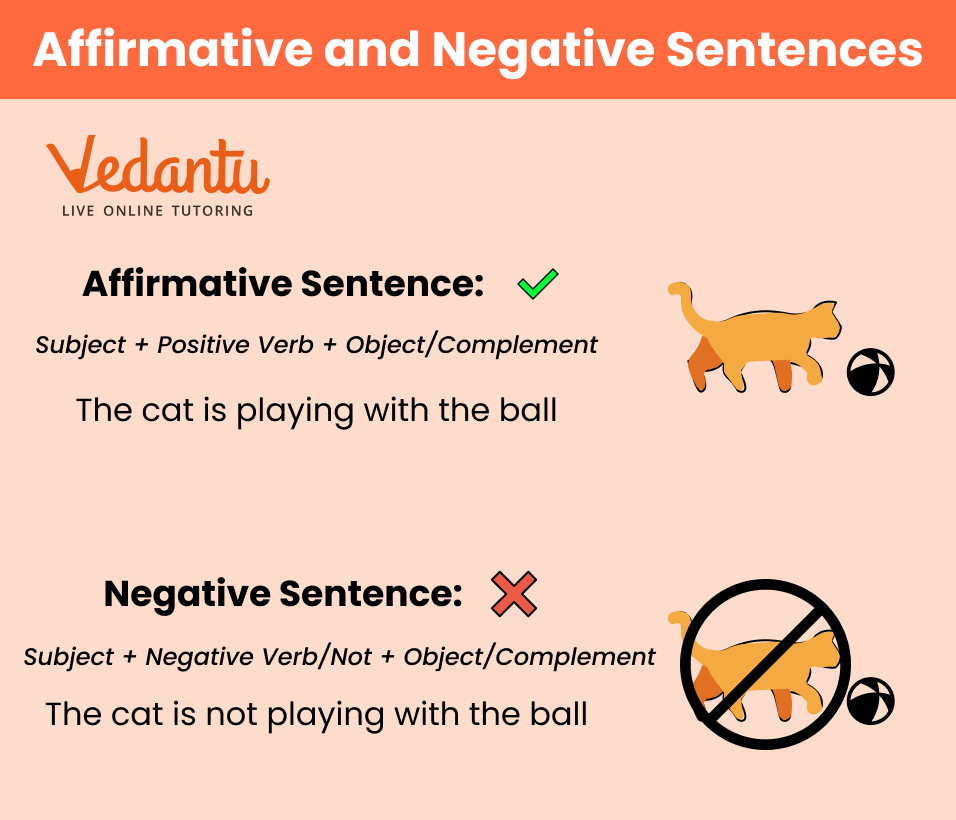




Affirmative Sentences: 10 Examples, Usage and More






FAQs on Affirmative Sentences: Examples and Structure
1. What is an affirmative sentence?
An affirmative sentence is a type of sentence that makes a positive statement or declares something as true. It states a fact, opinion, or situation without any negation. For example, "She is a teacher."
2. How do you form an affirmative sentence?
To form an affirmative sentence, use the structure: Subject + Verb + Object/Complement (if needed). For example, "He reads books" (Subject: He, Verb: reads, Object: books).
3. Can affirmative sentences be in different tenses?
Yes, affirmative sentences can be in any tense, including present, past, future, and continuous tenses. For example, "She is studying" (present continuous), "They went to the park" (past).
4. What is the difference between an affirmative and a negative sentence?
An affirmative sentence makes a positive statement, while a negative sentence denies or negates a statement. For example, "She likes ice cream" (affirmative) vs. "She does not like ice cream" (negative).
5. How do you change a negative sentence into an affirmative one?
To change a negative sentence into an affirmative one, remove the negative words and adjust the verb if needed. For example, "He does not like coffee" becomes "He likes coffee."
6. What is an example of an affirmative sentence in the past tense?
An example of an affirmative sentence in the past tense is: "They visited the museum."
7. Can an affirmative sentence include a question?
No, an affirmative sentence does not include a question. It is used to make a statement or declaration. For questions, you would use interrogative sentences instead.
8. What is the structure of an affirmative sentence in the simple present tense?
In the simple present tense, the structure is: Subject + Base Verb + Object/Complement. For example, "She eats breakfast" (Subject: She, Verb: eats, Object: breakfast).
9. How can you identify an affirmative sentence?
An affirmative sentence is identified by its positive tone and lack of negation. It clearly states something as a fact or opinion, such as "The sun shines brightly."
10. What are some common mistakes in forming affirmative sentences?
Common mistakes include incorrect verb forms, missing subjects, or incorrect word order. For example, saying "She like ice cream" instead of "She likes ice cream."
11. How do you convert an affirmative sentence into a question?
To convert an affirmative sentence into a question, rearrange the sentence structure to include an auxiliary verb (if needed) and a question mark. For example, "She is a teacher" becomes "Is she a teacher?"
12. What role do affirmative sentences play in communication?
Affirmative sentences are essential for making positive statements, providing information, and expressing opinions. They form the basis of most conversations and written communication by clearly conveying facts or beliefs.























